Elaborate Salt Labyrinths By Japanese Artist Motoi Yamamoto
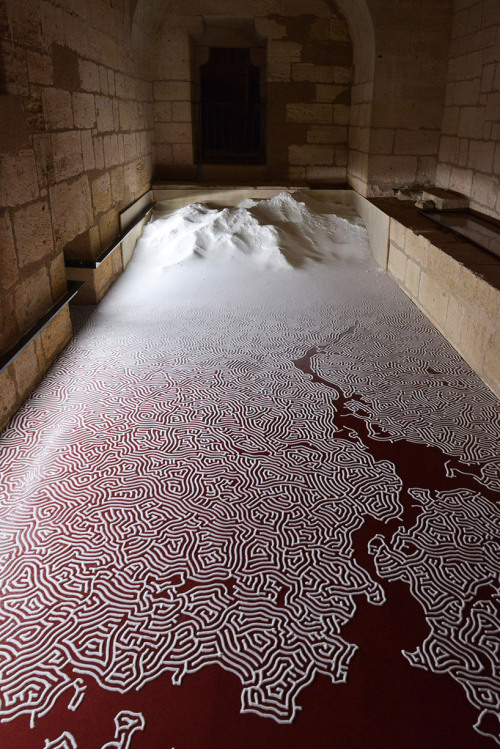
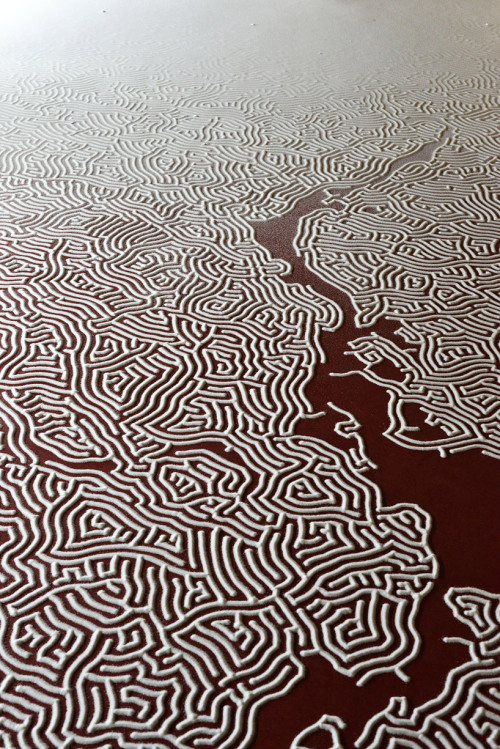
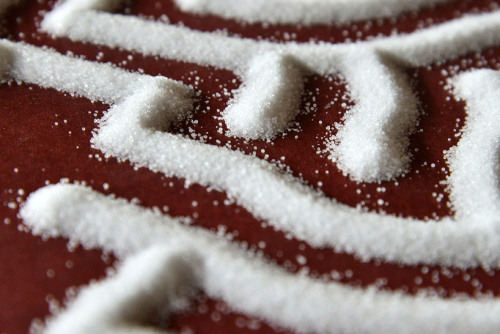
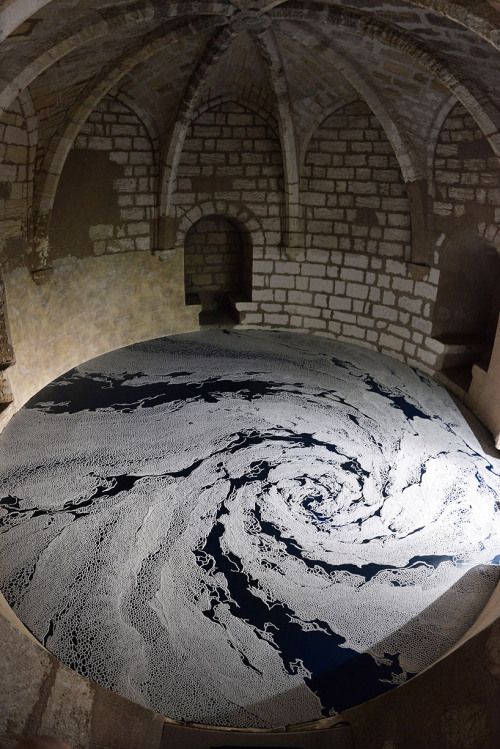
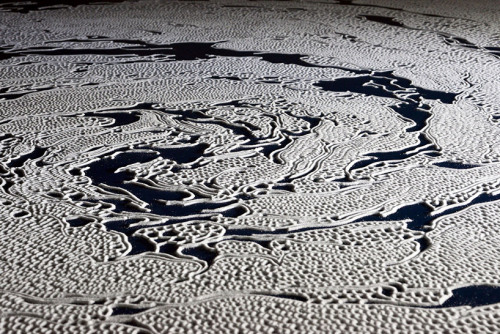

Elaborate Salt Labyrinths by Japanese Artist Motoi Yamamoto
More Posts from Sciencebloggin and Others


Computational intelligence cowculator to the rescue: https://wolfr.am/w0mzSVqa
Happy Cow Appreciation Day. We hope you have an udderly amazing day. #mooooood
Traditional chinese craftsmanship for architecture and furniture 榫卯 sǔn mǎo
The mortise and tenon technique does not use glues or nails and creates furniture that is usually very strong and durable.
Sunset lights the bottom of the clouds, viewed from above.
nprovince101
So Google does math for you??
division

square roots

dividing percentages

IT EVEN FOILS

beautiful.
I’m a huge fan of how rhodochrosite can either look like beautiful pink flowers, like pointy red crystals, like little Barbie-pink orbs, or like meat

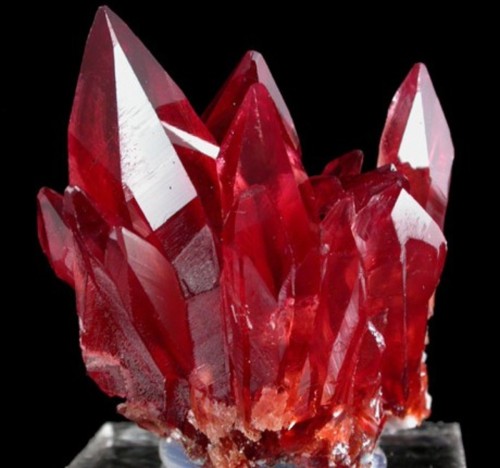



[ image description: rhodochrosite in each of the previously described forms, ending with some rhodochrosite stalactite chunks that look like breaded hams and one piece that looks like a raw steak growing out of a rock. ]
Watching a snowflake grow seems almost magical–the six-sided shape, the symmetry, the way every arm of it grows simultaneously. But it’s science that guides the snowflake, not magic. Snowflakes are ice crystals; their six-sided shape comes from how water molecules fit together. The elaborate structures and branches in a snowflake are the result of the exact temperature and humidity conditions when that part of the snowflake formed. The crystals look symmetric and seem to grow identical arms simultaneously because the temperature and humidity conditions are the same around the tiny forming crystals. And the old adage that no two snowflakes are alike doesn’t hold either. If you can control the conditions well enough, you can grow identical-twin snowflakes! (Video credit: K. Libbrecht)
An example of crown flashes, also called jumping sun dogs. They’re streamers of light above storm clouds that appear to dance and flash, sometimes quite rapidly, looking like search lights or huge light sabers.
They’re almost certainly caused by long ice crystals above the cloud that align themselves with the cloud’s electric field. If you see them from the right angle, they bend (or refract) the sunlight toward you, causing the glow.
When lightning erupts from the cloud to the ground (or inside the cloud) the electric field changes radically, realigning the ice crystals. When this happens they suddenly bend sunlight in a different direction, causing the glow to shift. (Source)
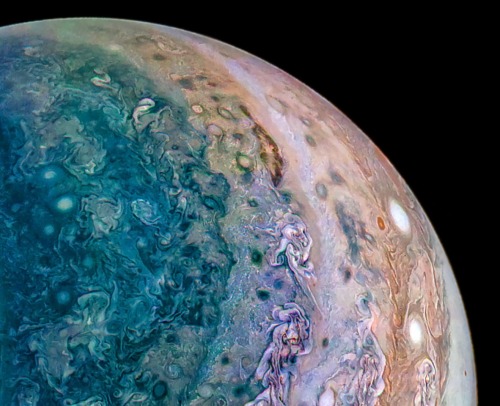

This image of Jupiter was taken by Juno on December 16 and then processed by citizen scientist David Marriott.
Image credit: NASA / JPL-Caltech / SwRI / MSSS / David Marriott
-
 iamsancho reblogged this · 1 month ago
iamsancho reblogged this · 1 month ago -
 iamsancho liked this · 1 month ago
iamsancho liked this · 1 month ago -
 cranberrybogmummymorpheme reblogged this · 1 month ago
cranberrybogmummymorpheme reblogged this · 1 month ago -
 blindreblogs2areblog reblogged this · 1 month ago
blindreblogs2areblog reblogged this · 1 month ago -
 nefra180 liked this · 1 month ago
nefra180 liked this · 1 month ago -
 happilyscreechinginfluencer liked this · 1 month ago
happilyscreechinginfluencer liked this · 1 month ago -
 noxmachine reblogged this · 1 month ago
noxmachine reblogged this · 1 month ago -
 alkonoststorm reblogged this · 1 month ago
alkonoststorm reblogged this · 1 month ago -
 temtemdesaratem liked this · 1 month ago
temtemdesaratem liked this · 1 month ago -
 sock-396 reblogged this · 1 month ago
sock-396 reblogged this · 1 month ago -
 lalablu reblogged this · 1 month ago
lalablu reblogged this · 1 month ago -
 thequintessentiallyme reblogged this · 1 month ago
thequintessentiallyme reblogged this · 1 month ago -
 thequintessentiallyme liked this · 1 month ago
thequintessentiallyme liked this · 1 month ago -
 asjjohnson liked this · 1 month ago
asjjohnson liked this · 1 month ago -
 radraptors liked this · 1 month ago
radraptors liked this · 1 month ago -
 kintatsujo reblogged this · 1 month ago
kintatsujo reblogged this · 1 month ago -
 cosmicshyguy liked this · 1 month ago
cosmicshyguy liked this · 1 month ago -
 jccuucyx liked this · 1 month ago
jccuucyx liked this · 1 month ago -
 death-by-swords liked this · 1 month ago
death-by-swords liked this · 1 month ago -
 narcissismand reblogged this · 1 month ago
narcissismand reblogged this · 1 month ago -
 lixleeeeee liked this · 1 month ago
lixleeeeee liked this · 1 month ago -
 theteethofgod reblogged this · 1 month ago
theteethofgod reblogged this · 1 month ago -
 vagueconfusion reblogged this · 1 month ago
vagueconfusion reblogged this · 1 month ago -
 ruinme-please reblogged this · 1 month ago
ruinme-please reblogged this · 1 month ago -
 sherifintown liked this · 1 month ago
sherifintown liked this · 1 month ago -
 maoqqxq liked this · 1 month ago
maoqqxq liked this · 1 month ago -
 watertankafternoon reblogged this · 1 month ago
watertankafternoon reblogged this · 1 month ago -
 watertankafternoon liked this · 1 month ago
watertankafternoon liked this · 1 month ago -
 eisthenameofme reblogged this · 1 month ago
eisthenameofme reblogged this · 1 month ago -
 yuniper reblogged this · 5 months ago
yuniper reblogged this · 5 months ago -
 gooseboat reblogged this · 6 months ago
gooseboat reblogged this · 6 months ago -
 themmeverse liked this · 6 months ago
themmeverse liked this · 6 months ago -
 laurellynnleake reblogged this · 6 months ago
laurellynnleake reblogged this · 6 months ago -
 laurellynnleake liked this · 6 months ago
laurellynnleake liked this · 6 months ago -
 artzandfashion reblogged this · 9 months ago
artzandfashion reblogged this · 9 months ago -
 unisazuki liked this · 10 months ago
unisazuki liked this · 10 months ago -
 absolutegremlin liked this · 10 months ago
absolutegremlin liked this · 10 months ago -
 snoodly-boop reblogged this · 11 months ago
snoodly-boop reblogged this · 11 months ago -
 snoodly-boop liked this · 11 months ago
snoodly-boop liked this · 11 months ago -
 yenoodlethings reblogged this · 11 months ago
yenoodlethings reblogged this · 11 months ago -
 madhatterhelsing reblogged this · 1 year ago
madhatterhelsing reblogged this · 1 year ago -
 faidesish reblogged this · 1 year ago
faidesish reblogged this · 1 year ago -
 a-little-bit-of-lots-of-stuff liked this · 1 year ago
a-little-bit-of-lots-of-stuff liked this · 1 year ago -
 recogniseillusionfromreality reblogged this · 1 year ago
recogniseillusionfromreality reblogged this · 1 year ago -
 automaticcompression reblogged this · 1 year ago
automaticcompression reblogged this · 1 year ago -
 automaticcompression liked this · 1 year ago
automaticcompression liked this · 1 year ago -
 3cheers4sweetrevenge reblogged this · 1 year ago
3cheers4sweetrevenge reblogged this · 1 year ago
